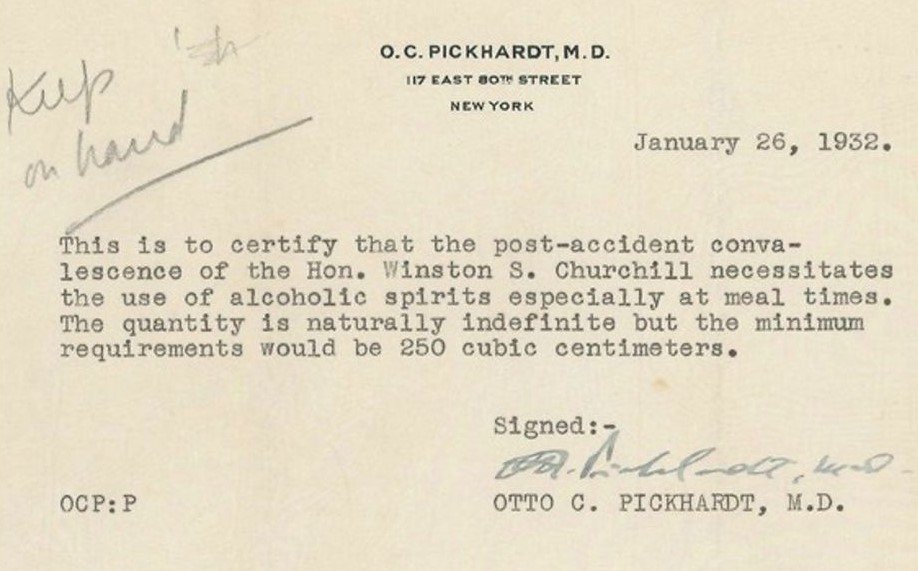 I would have thought Mr. Putin’s habit of defenestration would have made the prospect of being an oligarch less than attractive. I would think the real position to aspire to is the one where you don’t need the job, no one thinks you can do the job, you don’t even necessarily fit the job – but sooner or later the job comes to you. Consider Mr. Churchill above in 1932, as above, during his wilderness years. Yet immune to Prohibition when visiting friends overseas.
I would have thought Mr. Putin’s habit of defenestration would have made the prospect of being an oligarch less than attractive. I would think the real position to aspire to is the one where you don’t need the job, no one thinks you can do the job, you don’t even necessarily fit the job – but sooner or later the job comes to you. Consider Mr. Churchill above in 1932, as above, during his wilderness years. Yet immune to Prohibition when visiting friends overseas.
Is good beer entering a wilderness as we move into in this new political cycle? You know, the one dubbed by the Finns as the start of WWIII? Is that fair? I do fear that people are grasping for the return of something loved but lost as opposed to bracing for the shock of the new, like with this bit of advice:
Most of the category’s biggest threats have greater scale, but aren’t local, and that advantage must be exploited more. By directly engaging with neighbors through the hosting of events, sponsorships, and collaborating with other local businesses, breweries can build a sense of community that money can’t buy. Customers are more likely to support businesses they feel a connection to, so the more organizations that can be included, the more loyalty will compound.
What’s that? 2017 is calling? Fine. This sort of rehash strikes me as unhelpful, a sort of dreamy tariff-free wish for another time. Is that helpful? I was thinking about that when I read this on Blues Guy from wine writer Jamie Goode:
If you are a wine writer it’s really good to talk about the wines and how good they are (assuming they are) rather than concentrating on the business difficulties, the challenging market etc.! Your audience doesn’t need to know this, and it might end up putting a dampener on sales
It strikes me as a similar sort of thing. Hedging. Hedgy even. Whatever is coming is not going to benefit from tales half told or Obama-era building communities of buyers, you know, just as the money tighten. Compare that from this sort of starker statement from Beer Board about the state of diversity in US draft beer sales in 2024:
Not all brands contribute equally to volume or revenue: the top four draft brands drive about 2.5 times more sales than the next eleven brands, and 15 times more than the long tail.
Compare… hop water? As if. Yup, better to be blunter, bolder and perhaps even less pleasant. Like these top beer review panel notes of the week: “Ray quite liked but Jess almost spat out in disgust.” And as we consider Rachel Hendry‘s recent thoughts on her own writing:
Not so sexy, is it, to say things like I spent a lot of time on a project that didn’t go anywhere which now feels kinda embarrassing or I had some ideas that I thought were good but actually maybe they kinda sucked. The sadness and the strops were short lived because a) in the grand scheme of everything writing about wine really isn’t that important and b) I am a firm believer that failure is a good thing. Experiencing rejection means you were brave enough to put yourself out there in the first place, and that’s a win in itself. I like my weird and uncategorisable approaches to wine, I’ve worked hard on developing my style and ways of thinking and I’m not willing to compromise that, to conform my voice into something more mainstream.
A big fat double “Viva Viva!!” to that, Rachel. Be you. And congratulations on what every good drinks writer really needs – a job!
 Consider, too, Katie who considered her relationship with the champers and thought of her favourite pal shown in thumbnail to the rights:
Consider, too, Katie who considered her relationship with the champers and thought of her favourite pal shown in thumbnail to the rights:
The lovely woman in The Gulp’s header image is taken from a 19th century German oil painting called “Maid Secretly Drinking Champers” (possibly not its original name). She has cleared away the glasses from her Lady’s table, and in the hallway, hidden from view, she downs the last remaining dregs of the bubbles. Her head is tipped right back to catch every drop, her cheeks flush with excitement, knowing she is tasting something out of her reach — and yet is literally in her grasp regularly. I couldn’t think of a more appropriate image for this newsletter.
(Good news, Katie. Champagne sales are down and prices may follow.) Katie’s piece reminded me that I have an acquaintance who was a sommelier 40 years ago and told of us how he sometimes stopped midway on the back service stairway, sipping the last dribs from a 1948 or 1963 that he had served someone then famous now forgotten at some swanky London restaurant also then famous now forgotten. What he knew is what I think Katie’s hero knew. Look at the tray. There’s more in the other two glasses on the tray. There’s more.
Speaking of good news, Jessica Mason is on the mend and too the time to tell the very odd tale of a burglery in India:
The store, based in Tiruttani in India’s Tamil Nadu’s Tiruvallur district, had been locked by supervisors on Saturday night, but when staff returned on Sunday they found evidence of people having drilled through the wall to enter the premises. According to local reports, the money that was being kept in the shop and housed in stacked iron boxes had been completely left untouched with the thieves choosing to consume the alcohol available instead. Much to the shop owner’s surprise, the money in iron boxes inside the shop had been ignored with the miscreants favouring the beer instead and leaving just a collection of empty bottles behind from their night time escapade.
How civil! Similarly note: “…this is already the best stop on the A1…”
There are other glimmers of good. Boak and Bailey considered the demise of pub food this week when they were asked to recommend a spot for that purpose. I have to say, if I am in a pub these days it is more likely as not that I am eating a meal. And sometimes, yes, I am disappointed. As they have been – until they gave a heads up:
It’s interesting how often we find ourselves in pubs that no longer serve food and hear people ask at the bar: “Is the kitchen open?” They haven’t updated their mental model from before the pandemic. Trying to answer the question we’d been asked, we debated The Barley Mow a bit – it does have food, but when is it served? We couldn’t find this out online and nobody wanted to phone to ask. In the end, we suggested a 10-minute walk into town where The Old Fish Market, a rather corporate Fuller’s pub, is still selling the 1990s gastropub dream. Our correspondent was very happy with apparently excellent crispy pork belly and roasted vegetables.
Is this reflective of a turnaround for at least the corporate chain pubs of Britain? Spoons has been booming a bit:
The pub chain also posted a 4.6% increase in like-for-like sales for the second quarter, bolstered by a 6.1% rise during the critical three-week Christmas period. But as the tills rang merrily, the company’s future increasingly appears “at the mercy of politicians,” with cost pressures mounting. Chairman Tim Martin, addressing the results, said that sales during the Christmas period were particularly strong, showing customer loyalty to Wetherspoons’ value-oriented proposition. Martin said: “Sales during the Christmas period were robust, highlighting the resilience of our approach in challenging times.”
And even further away, The Beer Nut decided to channel his inner Ron and headed to Brazil, living to tell the tale:
It’s hard to beat a bit of sunshine and warmth in the midst of the winter gloom. Last month’s New Year jaunt certainly provided that, with a week or so in sunny, and rainy, but most of all warm, São Paulo, Brazil’s largest city. It’s a city that sprawls like few others, so I’m definitely not in a position to provide you with a guide to the best beer places. This week’s posts are just about what I drank, and most of that came from the supermarkets. I did get to a handful of bars, however. Just around the corner from where I was staying, and a stone’s throw from Paulista, the city’s grand main boulevard, was a small and bustling open-fronted restaurant and bar called Asterix, specialising in beers from local outfits.
A similar story seems to be taking place in Korea where small local beers are selling well in small local stores thanks to some regulatory reforms:
The market shares of local craft beers were particularly notable in convenience stores and major retail stores. In convenience stores, craft beer cans accounted for 0.18 percent of the market share in 2019. The figure jumped to 5.3 percent in 2022. The number of domestic craft beer brands also increased. At convenience stores, the number of brands increased from 26 in 2019 to 154 in 2023. Their prices also dropped from as high as over 3,700 won ($2.57) per can to 2,765 won.
So things are moving. The now gainfully employed Rachel Hendry provided us with the Pellicle feature this week, the story of “celebrity” wine branding (with pithy* observations that are equally applicable to beer) helpfully using the case** study of Dolly Parton wine so I know what to avoid:
I’d expected her wines to shimmer and sparkle like she does, for the rosé to taste like sugared rose petals and juicy segments of watermelon, the Prosecco to be effervescent with freshly zested limes and the soft perfume of wildflowers catching in the breeze. I was let down. But how do other celebrity wines compare? There’s nothing celebrities love more than making a rosé, so I try a few out of interest. Gary Barlow has one that is proudly “organic,” whatever the fuck that means these days. The wine is made from Tempranillo grapes grown in Spain’s Castile region and tastes astringent and acidic, the fruit is too intense, like softly rotting strawberries and the stringy white pith of a grapefruit.
Not at all like softly rotting strawberries, we see that Hop Queries is out for this month, Stan’s newsletter on the bitter and smelly aspects of brewing. He linked to an IG post from Crosby Hops that shared some stats on the demise of these hops varieties:
Cashmere: Down 60% in 2 years; Comet: Down 64% since 2022; Mt. Hood: 142 acres remain in Oregon; Mt. Rainier: No longer reported in Washington; Sabro®: Down 69% since 2022; Talus®: Down 78% since 2022; Triumph, Zappa™, Ahtanum® No reported acreage for 2 years…
The first is just an unfortunate name choice for any Canadian… but Mt Hood? That was always my hop to hate 20 years ago. Rough gak. Who owns those last 142 acres anyway?
And who doesn’t love a good schism? I know I do. That’s why I was so very pleased to see that the homebrewers of America are walking out on the craft brewers of America when both are facing something of a slump:
Today, the American Homebrewers Association® (AHA) filed for incorporation in Colorado and seated a founding board of directors in steps to become an independent 501(c). Founded in 1978, the AHA has operated as a division under the umbrella of the Brewers Association—the not-for-profit trade association dedicated to small and independent American craft brewers—since 1983. With these actions, the AHA will operate as a nonprofit organization autonomous from the Brewers Association, its parent organization, by the end of 2025.
Why? If we think of divorces, the roots of these sorts of things often go back to alcohol or debt. Well, we can rule out the first given, in this case, the solvent actually is – or at least was – the bond. Hmm… “very much needed“? So… what happened? Were doors slammed? Pointy fingers pointed??? Gossip is greatly apperciated. Comments are open.
Speaking of the end times, some but perhaps not that many noticed the release of this year’s Ontario Brewing Awards – but Jordan did and he made a game of it:
Since the Ontario Brewing Awards were this week, I thought I’d go back and figure out who has actually won the most OBAs over time. I awarded 5 points for Best in Show, 3 for Gold, 2 for Silver, 1 for Bronze or People’s Choice, and 0.5 for honorable mention.
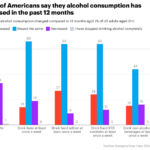 Finally, a reminder. Yes, there are health warnings. But more to the point, there are habits. If you are listening to those who talk of “neo-temperance” you may be missing a mood change that has nothing to do with lobbyists or public health officials. That handy dandy thumbnail is from a YouGov survey of drinking habits in the USA over the last 12 months. I am not really the audience as I would appear to be a purple or two and the rest all greys. But if more people are purples than reds as appears to be the case, then habits are continuing on the decline. Rooting for booze is not a strong strategy. Blame whatever you want recreationally but hedge your business bets accordingly regardless.
Finally, a reminder. Yes, there are health warnings. But more to the point, there are habits. If you are listening to those who talk of “neo-temperance” you may be missing a mood change that has nothing to do with lobbyists or public health officials. That handy dandy thumbnail is from a YouGov survey of drinking habits in the USA over the last 12 months. I am not really the audience as I would appear to be a purple or two and the rest all greys. But if more people are purples than reds as appears to be the case, then habits are continuing on the decline. Rooting for booze is not a strong strategy. Blame whatever you want recreationally but hedge your business bets accordingly regardless.
There. As the courtier oligarch start to sweat and borders get fuzzier, please check out Boak and Bailey every Saturday and Stan going strong again each and every Monday. Then listen to Lew’s podcast and get your emailed issue of Episodes of my Pub Life by David Jesudason on the (sometimes even but never) odd Fridays. And Phil Mellows is at the BritishBeerBreaks. Once a month, Will Hawkes issues his London Beer City newsletter and do sign up for Katie’s wonderful newsletter, The Gulp, too. The Share looks to be back with a revival. Ben’s Beer and Badword is out there with the all the sweary Mary! And check out the Atlantic Canada Beer Blog‘s weekly roundup. There is new reading at The Glass which is going back to being a blog. Any more? Check out the Beer Ladies Podcast. That’s quite good and they are revving up for a new year. And the BOAS podcast for the bro-ly. And the long standing Beervana podcast …except they have now stood down. Plus We Are Beer People. The Boys Are From Märzen podcast appears suspended as does BeerEdge, too. VinePair packed in Taplines as well. All gone. But not Ontario’s own A Quick Beer. There is more from the DaftAboutCraft podcast, too. All About Beer has sponsored trade possy podcasts and there’s also The Perfect Pour. Plus follow the venerable Full Pint podcast. And the Craft Beer Channel on Youtube. The Moon Under Water is gone which is not surprising as the ask was $10 a month. Pete Brown’s one cost a fifth of that but only had the one post. Such is life.
*Pun!
**Another pun!!

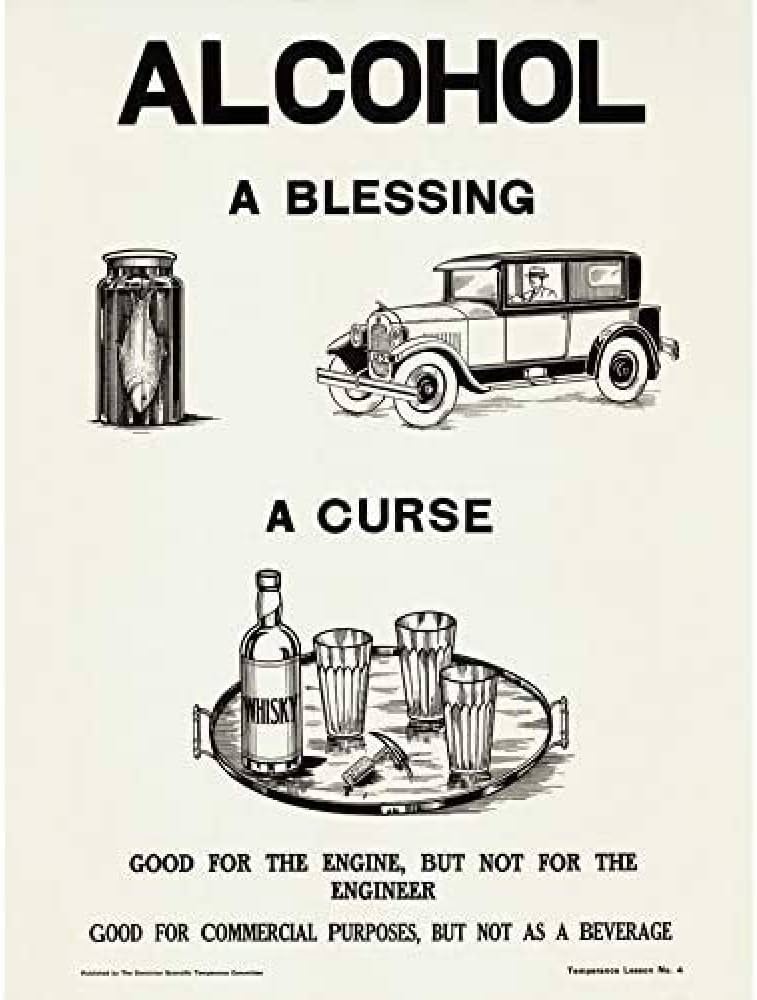



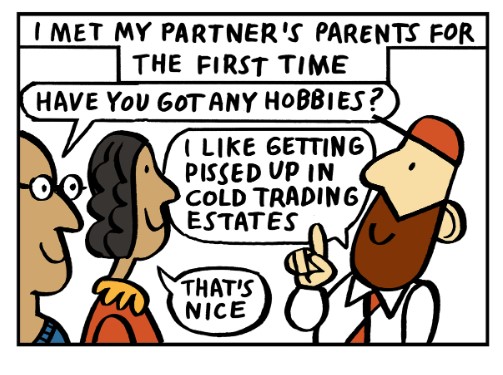


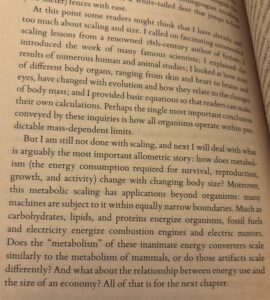

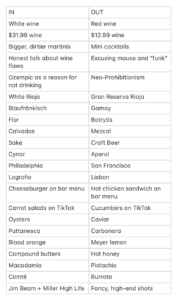
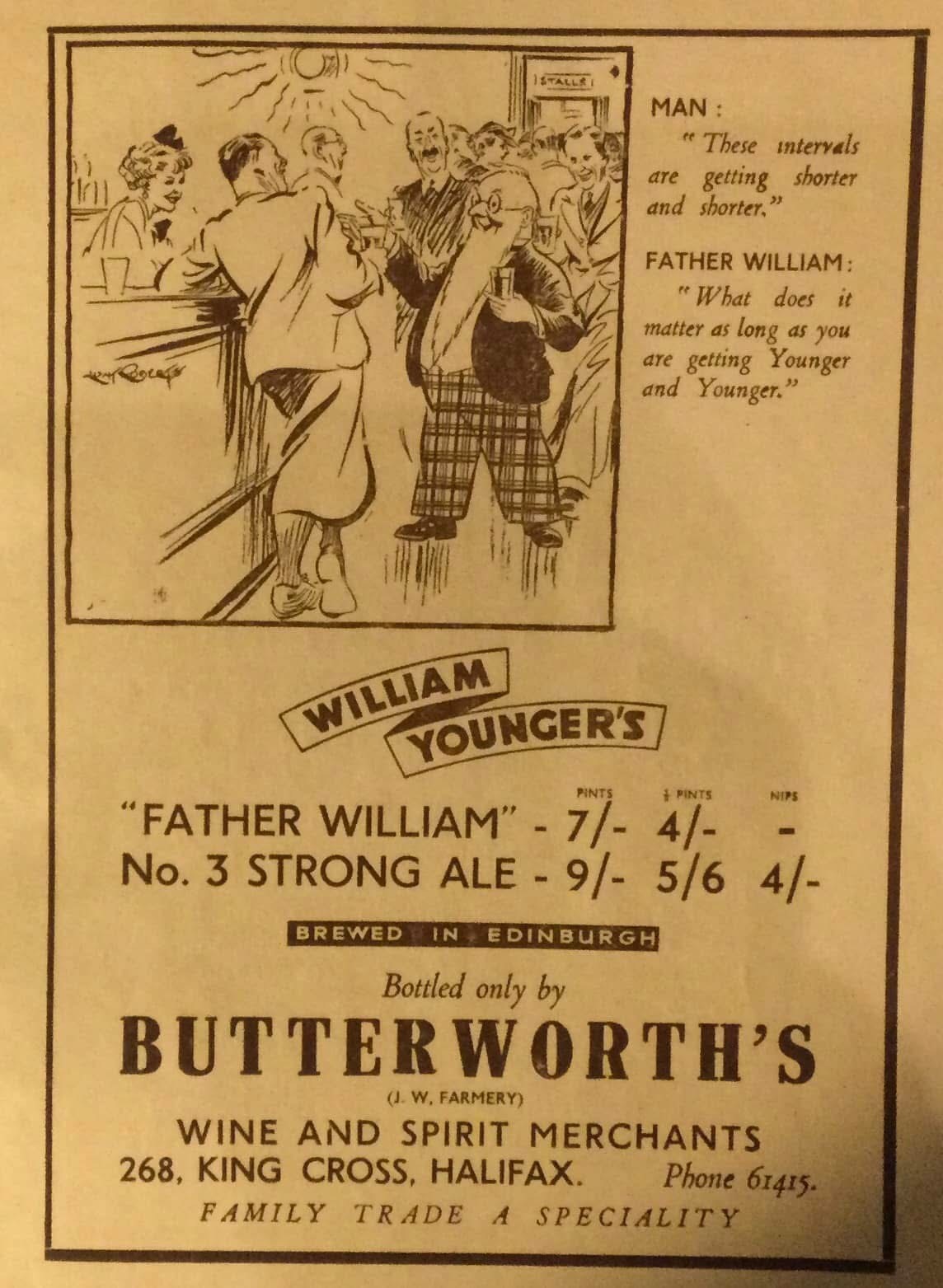

 My top tipple of the last ten days, in case you were wondering, has been
My top tipple of the last ten days, in case you were wondering, has been 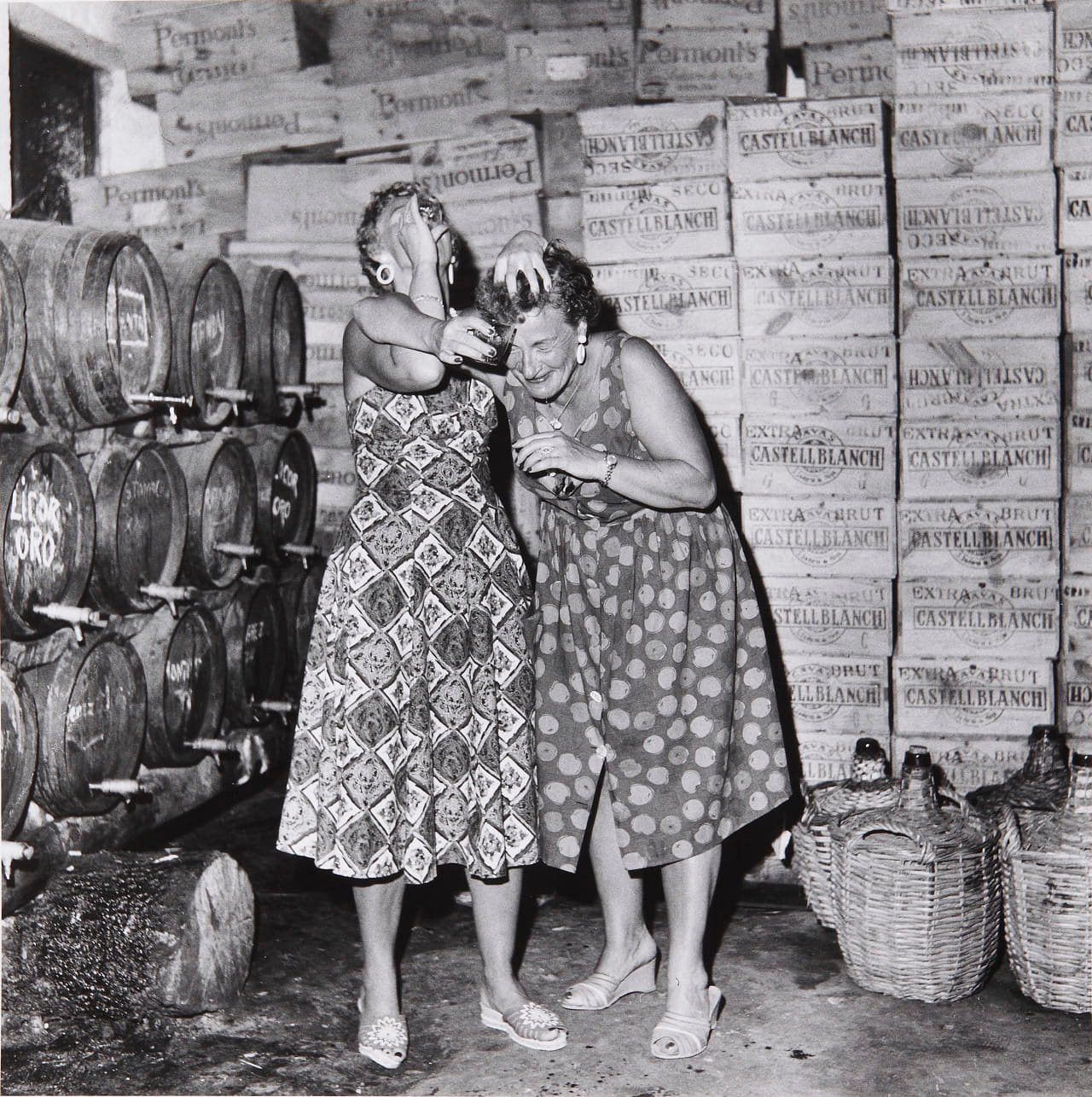 Fine. Almost festive. Almost. But this is when the slide starts to feel greased. Five weeks to Boxing Day. Whoooo! The Boxing Day carols shall ring out loud around the Boxing Day leftover casserole once again!! The most wonderful time of the year
Fine. Almost festive. Almost. But this is when the slide starts to feel greased. Five weeks to Boxing Day. Whoooo! The Boxing Day carols shall ring out loud around the Boxing Day leftover casserole once again!! The most wonderful time of the year